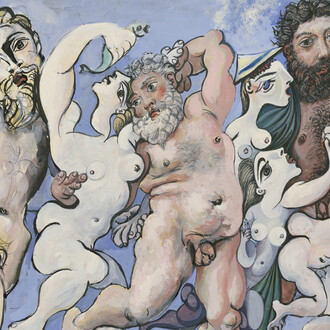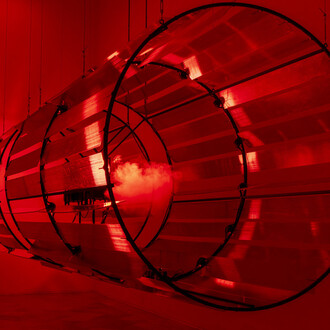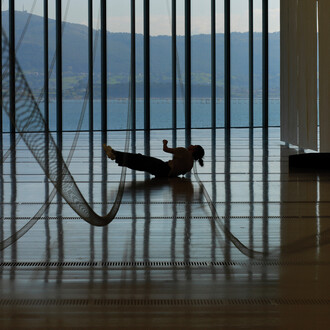Against tranquil grandeur begins with a suspicion toward the narrative and formal foundations that have shaped the canon of Art History over the centuries. The title challenges the principle formulated by Johann Joachim Winckelmann, considered one of the “fathers of Aesthetics,” in the 18th century: “noble simplicity and tranquil grandeur,” which cemented the classicist paradigm. Rather than a direct opposition, the exhibition introduces a friction with the authority of the canon that names, orders, and hierarchizes.
Aiming to expose the fragility of aesthetic authority, the exhibition proposes a distortion of the ideological apparatuses of the canon, reappropriating and challenging its traditional formats. The library, understood as a system of organization, is presented in fragments, alluding to the breakdown of legitimized knowledge. The portrait, a normative representation of a specific individuality, is constructed here through the accumulation of art magazines, dissolving the notion of uniqueness into a collective identity—a portrait of portraits. Meanwhile, the classical ornament, a symbol of formal grandeur, is revisited in the form of a baroque volute made of wire mesh. Typically used as a base or structural support, the mesh now takes center stage, creating a contrast between the "nobility of the material" and the intention to adorn with an inappropriate substance. The form remains, but the material betrays it.
Through the fragmentation and subversion of established forms, Against tranquil grandeur offers a view of tradition through disruptive gestures that erode aesthetic authority—its narratives, symbols, and materials.













![Saul Steinberg, The museum [El museo] (detalle), 1972. Cortesía del Museo de Arte Abstracto Español](http://media.meer.com/attachments/dfbad16c22c5940b5ce7463468ac8879f3b4bf23/store/fill/330/330/042ecf3bcd2c9b4db7ddbc57cb32e950c095835f7b5cd55b6e1576a6e78c/Saul-Steinberg-The-museum-El-museo-detalle-1972-Cortesia-del-Museo-de-Arte-Abstracto-Espanol.jpg)


